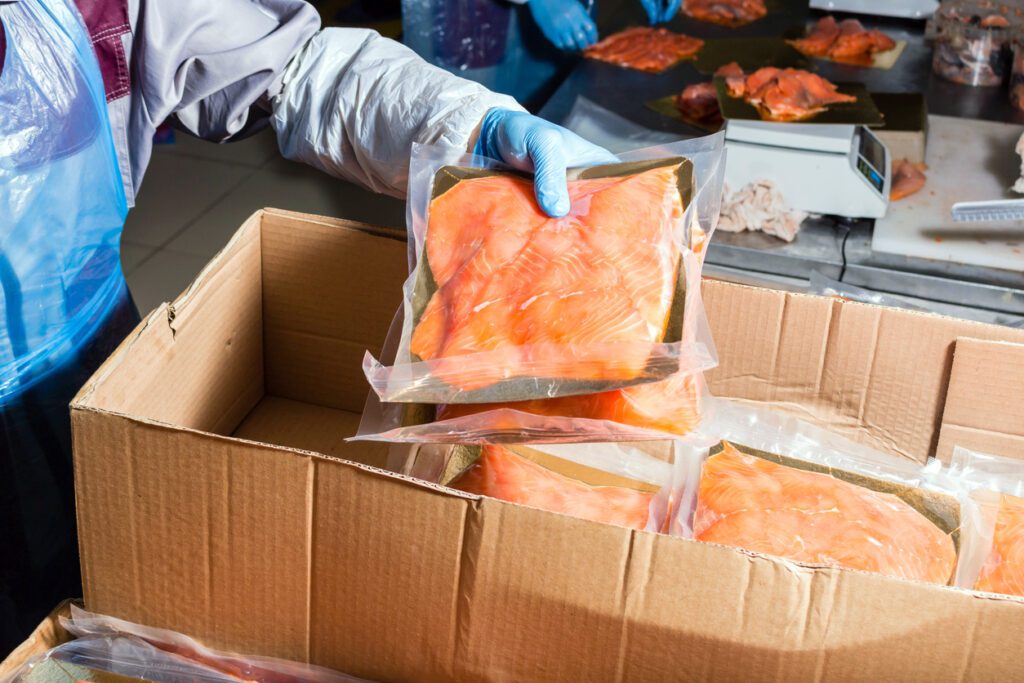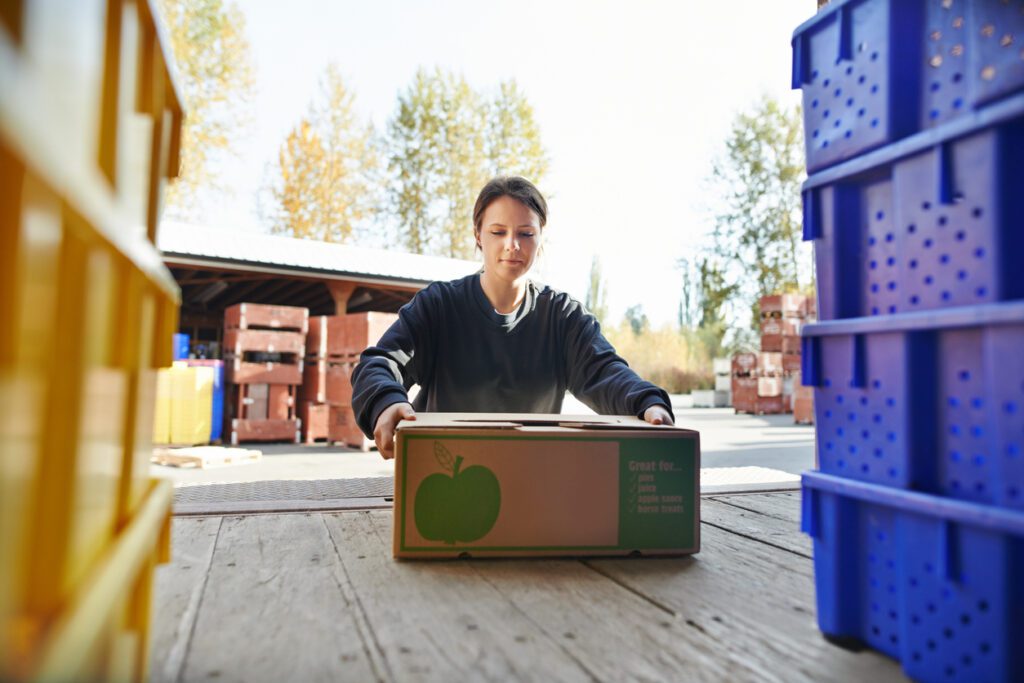How Can I Ship Frozen Goods Safely and Ensure Freshness? The Ultimate Guide for CSA Farmers
Shipping frozen goods safely and maintaining their freshness is a critical challenge for CSA farmers and food businesses alike. Whether you’re sending frozen seafood, frozen meat, or other perishable items, understanding the proper shipping process, packaging materials, and temperature control options is essential to protect your products and satisfy your customers. Are you struggling to ship frozen goods as expected? Do you want more strategies and solutions that can help you accomplish your goals? If so, take a look at these best practices, from dry ice and gel packs to proper labeling and more.
Why It’s Important To Ship Frozen Goods Properly
Frozen food requires special handling when shipping it. This is true whether you’re trying to send it across the state or across the country. Improper shipping can expose a wide range of risks, including spoilage, contamination, and a decrease in overall quality, among others. Unfortunately, all too many brands struggle to keep their frozen food frozen when sending it out.
Long transit times and temperature fluctuations introduce a number of potential hazards that can make it difficult to get food to its destination in the best quality possible. That means disappointed customers, spoiled goods, and an overall decrease in profits—not to mention loss of customers as they choose brands that are better positioned to meet their expectations.
Selecting the Right Carrier To Ship Frozen Goods
Choosing the right shipping carrier for your frozen items is an essential first step in the process. Whether you’re considering UPS, FedEx, or USPS for domestic shipments or looking into international options that can effectively carry your frozen goods across the country, it’s important to choose the right options. Consider:
- Available temperature control solutions, including whether the brand offers options like climate-controlled trucks.
- Whether you can get 24/7 monitoring to make it easier to ensure that temperature fluctuations do not interfere with the quality of frozen goods and their temperature.
- The brand’s ability to get your goods to their destination on time.
Doing your research ahead of time is crucial when it comes to shipping frozen items. You want to know that your carrier has the capability you need to keep those goods fresh and ensure that they arrive in great condition.
In addition, make sure you understand the hazardous material regulations for shipping dry ice. Those regulations include not only clearly marking the package and including all necessary documentation. You must also properly vent to prevent the buildup of hazardous gases. Failure to follow those regulations can mean danger to your package and its carriers.
Preparing Frozen Food for Shipment

Properly preparing your frozen food for shipment is critical. Start by using plastic wrap and plastic containers to prevent leaks and contamination. Using the proper packing materials doesn’t just protect other items in a truck from your shipments. It can also prevents your frozen food from being contaminated by other items in the truck. Consider double-bagging and using watertight plastic bags for extra protection.
If you’ll be shipping items like baked goods, which are more delicate than other frozen items, start by wrapping each one individually. Then, freeze them solid before packing them for shipment. This can help protect those goods and ensure that they reach their destination safely. Try to avoid placing freezer packs or dry ice directly against those items during the shipping process.
Choosing Appropriate Packaging Materials and Insulated Containers
Selecting the right packaging and materials for shipping is critical. Start by selecting the right type of shipping container. Insulated boxes help protect your products and maintain a consistent temperature, even if there is some unexpected variation in the truck or the package’s conditions.
In addition, think about what you’re shipping. Some items, including fragile ones, may benefit from foam insulation, bubble wrap, and packing peanuts. These materials not only add extra insulation that can help maintain a consistent temperature, but also help cushion the items in your shipment against jostling and bouncing, which could break the items.
Creating an airtight seal is essential to keeping frozen products fresh. Using packing tape or containers specifically designed to create that seal can help you protect your goods and provide a better experience for your customers.
Using Dry Ice Safely and Effectively
Dry ice, or frozen carbon dioxide, can reach extremely low temperatures. It freezes at around -109.3 degrees F, which means that it can help keep your frozen goods cold for a long time during shipping. However, handling and packing dry ice properly is essential for avoiding carbon dioxide buildup and protecting against damage. That means:
- Ensuring that the container is vented to prevent carbon dioxide buildup.
- Using a sturdy, insulated container.
- Keeping items in the shipment away from direct contact with the dry ice, which can cause freezer burns and the risk of other damage.
In addition, carefully look into the labeling requirements for shipping dry ice with your preferred carrier. Improper packaging and labeling can increase the risk of damage and lead to high fines. Dry ice and other hazardous materials may also have net weight limits that vary by carrier. Be sure to do your research ahead of time to find the right combination and carrier for your shipment.
Alternatives to Dry Ice: Gel Packs and Frozen Gel Packs
Gel packs and frozen gel packs can be an alternative to dry ice for some shipments. In general, they are used for items like produce, which need to stay cold, but not frozen, during the shipping process. Gel packs are safer and easier to handle than dry ice. They may also have fewer shipping restrictions. However, they may not stay as cold as dry ice. This means they should not be used for items like ice cream or seafood, which need to remain frozen solid during the shipping process.
Gel packs can also be used in combination with dry ice to create added insulation and increase the odds that your frozen goods will still be frozen when they reach their destination. This is especially useful if you’re dealing with long shipping times.
To ship with gel packs:
- Freeze the gel packs ahead of time.
- Pre-chill the insulated container to help it start off at the right temperature.
- Place items that need to remain chilled in a watertight, plastic liner.
- Arrange gel packs on all sides of the items, using a buffer layer to prevent direct contact.
If there is any empty space in the container, fill it in with packing material to help maintain a consistent temperature during shipping.
Proper Labeling and Documentation for Shipping Frozen Goods
When shipping frozen goods, you may need to include special handling instructions on the shipping labels. That may include noting that the items are perishable and that they need to be kept frozen. If you use dry ice, you may need to include “Carbon Dioxide Solid, UN1845” labeling. Check with your carrier to see what forms are required: if you’re shipping dry ice by air, for example, you will need a Class 9 DOT label.
Proper labeling is essential for perishable goods and hazardous materials. That labeling ensures that shipping providers take the proper care with those items—and that neither you nor your end customers are surprised by any problems when they reach their destination.
Minimizing Transit Time and Managing Shipping Schedules

As part of shipping frozen goods, you need to carefully manage your shipping schedule to ensure that goods get to their destination on time and in good condition. Frozen goods often have a limited window for delivery, since you’re relying on dry ice and cold packs to protect them. When possible, choose the fastest shipping options. These include UPS Next Day Air and FedEx Overnight. This shipping method will get frozen goods to their destination faster. In addition, plan shipments to avoid delays and weekend hold-ups.
Track shipments carefully to ensure that shipping time is on track and that you can let recipients know about any potential delays.
Handling Different Types of Frozen Food Items
Different types of frozen food items may need to be handled differently in order to ensure safe transit. For example, keeping meat and seafood frozen solid is essential during transit. Some items, including fruits and frozen produce, may need to remain at consistent temperatures and avoid the introduction of extra humidity, while precooked frozen food may need to be protected against the introduction of contaminants. Carefully consider both what you need to pack and how you need to pack it in order to ensure maximum safety.
Monitoring Temperature and Humidity Levels During Transit
Humidity can interfere with the quality of frozen food, especially if high levels of humidity are introduced during shipping. For sensitive shipments, consider using temperature sensors and humidity monitoring tools to ensure that your goods get to their destination in the best condition possible. These simple steps can go a long way toward protecting your goods and ensuring customer satisfaction. In addition, to ensure proper temperature control, make sure you’re using the right products and choosing a shipping provider that can keep temperature and humidity consistent during shipping.
Avoiding Common Mistakes When Shipping Frozen Food
As you prepare your frozen shipment, avoid these common errors.
- Using regular ice: Ice melts fast and may not maintain the consistent temperature you need—not to mention making your goods soggy.
- Soggy items: Watertight packaging and using the right solutions for temperature control, including dry ice and gel packs, can prevent items from getting soggy in transit.
- Overpacking or underpacking: Correctly packing the shipping container can prevent movement and maintain the right temperature during the shipping process.
If you have questions, work with your shipping provider to create a better environment for your shipments.
Shipping Frozen Goods for Small vs. Large Volume Businesses
Shipping frozen goods can be more complicated for small businesses, which may not have the resources to handle those shipments. Working with a third-party logistics provider can make it easier to manage your high-volume shipping needs more effectively. In addition, your delivery provider may have technology that can make it easier to monitor your shipments and manage deliveries effectively.
At Delivery Biz Pro, we can help businesses of all sizes manage shipments of frozen goods more effectively. Our delivery management platform optimizes shipping routes and schedules, getting your frozen goods to their destination on time and decreasing the risk of unexpected thawing. We also offer solutions that can help with customer communication, which decreases the risk that shipments will be missed or left sitting outside. Request a demo to see how Delivery Biz Pro can help your CSA farm or food business ship frozen items safely and efficiently
How To Handle Returns and Spoiled Shipments
Returns and spoiled shipments can be extremely complicated when you’re dealing with frozen goods. You may want to have customers provide proof of spoiled goods, including photos, but allow them to manage disposal themselves, rather than requiring a return. Keep in mind that customers may not know how to package frozen items properly for returns—and that perishable food items may not be resold after a return.
If shipments arrive thawed or damaged, try to find the reason for those challenges. Communicate with shipping providers, use monitoring equipment to track potential problems in the shipping process, and look for problems with packaging. While it may not save the damaged shipment, it can go a long way toward preventing future problems.
In addition, make sure you remain in communication with your customers. Communicating early can allow you to identify potential shipping problems and make customers aware of the steps they need to take.
Leveraging Delivery Biz Pro’s Platform for Efficient Frozen Goods Shipping
Shipping frozen goods safely requires careful planning, proper packaging, and choosing the right shipping carrier and service. By following this guide, CSA farmers and food businesses can ensure their frozen food arrives fresh and maintains the highest quality. To streamline your shipping process and enhance delivery efficiency, consider using Delivery Biz Pro’s delivery management platform. Request a demo today and discover how our technology can support your business in shipping frozen and perishable items with confidence.
